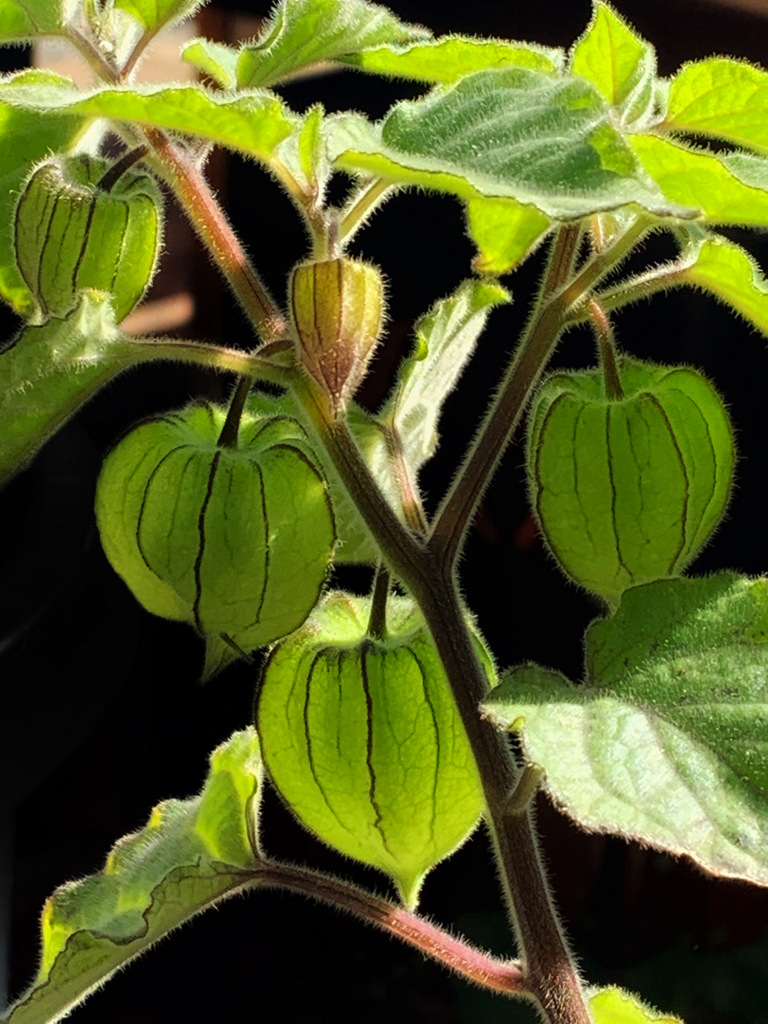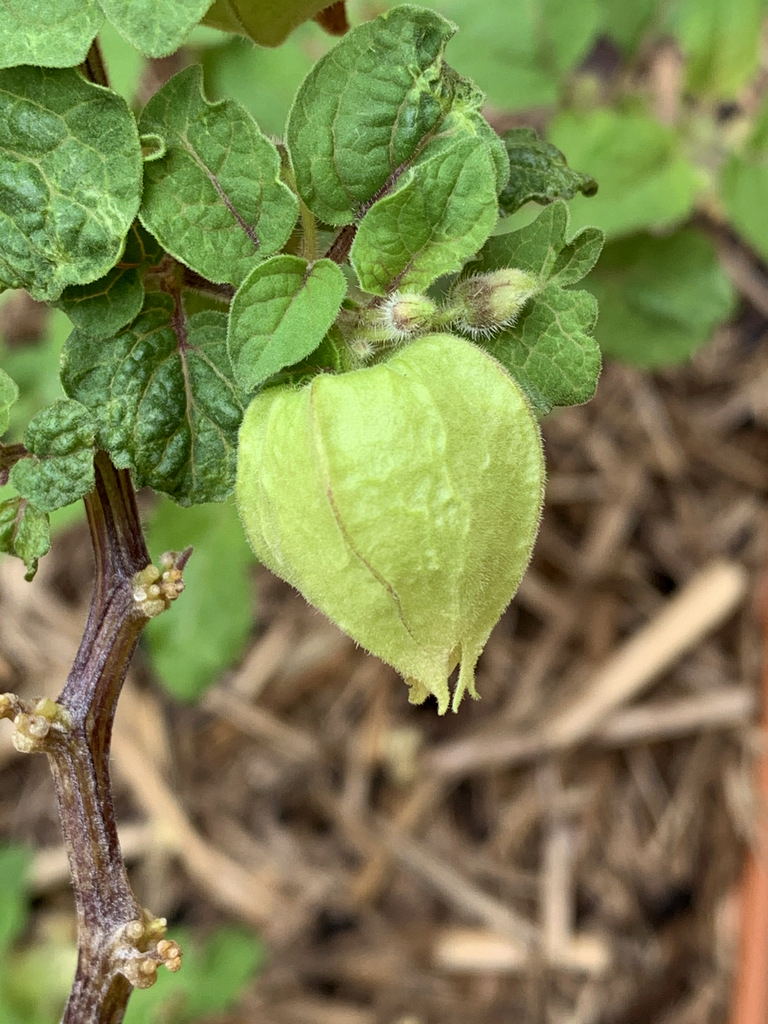Cape Gooseberry is a low growing shrub that produces edible orange berries. Here’s how to grow it from seed, use it in the kitchen and apply it to drinks.

Cape Gooseberry – Photo © The Gourmantic Garden
One of the advantages of having an edible garden is growing a variety of fruit, vegetable and herbs not commonly found in supermarkets and green grocers. One such plant is the Cape Gooseberry which produces berries with a sweet-tangy flavour.
Cape Gooseberry (Physalis peruviana), also known as ground cherry and goldenberry is part of the physalis family, a nightshade and relative of the tomato. It grows as a shrub about one metre high and produces orange berries encased in a paper lantern-like calyx.
Although it is a perennial in the tropics, it is short lived, producing at best in the first two years. In Sydney’s temperate climate, I have been able to keep the plant during winter, growing against a brick wall that gets a good amount of sun and warmth.
Cape Gooseberry: Golden Nugget vs Dwarf
I have grown two varieties, Cape Gooseberry Golden Nugget and Cape Gooseberry Dwarf, the latter being a dwarf variety grows to 90cm tall vs 120cm. Both seeds are from the same seed supplier, and both are grown in containers. However, I have found a lot more differences than mere height, and after two years of growing and comparing both plants, I won’t be growing the dwarf variety again. Here’s why.
 Cape Gooseberry Golden Nugget – Photo © The Gourmantic Garden |  Cape Gooseberry Dwarf – Photo © The Gourmantic Garden |
Let’s look at the differences first. Cape Gooseberry Golden Nugget has soft, furry green leaves while the dwarf has brighter green and more rigid leaves. The former produces larger fruit encased in a larger calyx which has more of a striped look than the dwarf. Flavour-wise, the golden nugget is much sweeter and larger. The fruit from the dwarf plant drops long before it matures or splits before it ripens. You may have seen photos of the paper like casing looking like lace; mine have never reached that stage.
The dwarf plants haven’t survived much of Sydney’s summer weather and its fluctuations and haven’t lived up to the premise of being perennial. I’ve had to pull them out mid-season in summer while the Golden Nugget is still powering along.
GROW IT
How to Grow Cape Gooseberry
Seeds can be sown in spring and summer and in my experience, it prefers slightly warmer temperatures than those of early spring which means around 25oC is ideal. It’s best raised as seedling then transplanted into a permanent spot.
Sow the seeds 4mm deep and be patient. It can take anything from 2 to 6 weeks to germinate. Once a few true leaves have formed, the seedlings can be transplanted to their permanent position, be it in a garden bed, container or in the ground.
The evergreen shrub grows in full sun so choose a position that gets at least six hours a day of bright sunlight. It favours moist soil. There’s no need to over fertilise as this will be at the expense of fruit.
The plant takes approximately 140 days to mature, that is well over four months. Once it has produced flowers, which are self-pollinating, you can expect the fruit to mature in 70 to 80 days, which is well over two months. It may be a low maintenance edible but it surely is one that tests the patience. If the fruit drops in its calyx, the berries will continue to ripen after picking if left on a windowsill.
Overall, the plant has been disease free aside from shedding yellow leaves every so often. I suspect it may be slightly root bound and has outgrown its container and I will transplanting it once it has stopped fruiting.
EAT IT

Cape Gooseberry Frangipane Tart – Photo © The Gourmantic Garden
The fruit of the Cape Gooseberry is sweet and tangy with a pleasant tartness, and as such lends itself to jams, desserts, cakes, baked goods as well as salads. The berries have tiny seeds so the fruit can be eaten raw or cooked.
Here’s my recipe for Cape Gooseberry Frangipane Tart. It’s delicious and decadent with the flavour of the fruit pairing well with the nuttiness of a frangipane tart.
DRINK IT

Cape Gooseberry Liqueur – Photo © The Gourmantic Garden
With its tart and sweet flavour, Cape Gooseberry can be made into a syrup, preserved into a drinking shrub muddled and shaken in cocktails. It pairs well with spirits such as gin, vodka, rum and bourbon. I have taken it a step further and made a Cape Gooseberry and Lemon Balm Liqueur from this year’s harvest.
One way to use the liqueur is in a French 75 style of cocktail. If you prefer a slightly less alcoholic version, you can top with soda water.
The Cape Gooseberry plant is well worth having in your edible garden. It’s low maintenance, produces delicious fruit that you won’t find easily in the shops and if you do, you certainly won’t have to pay $6.99 for 50g.
Want to Know More?
You’ll find more information on how to grow cape gooseberry, which varieties to try, how to pair it with food and spirits, and how to use it in cocktails including a full recipe in my 260+ page digital book GROW YOUR OWN COCKTAIL GARDEN available now.


